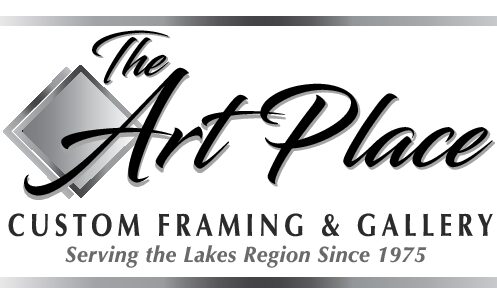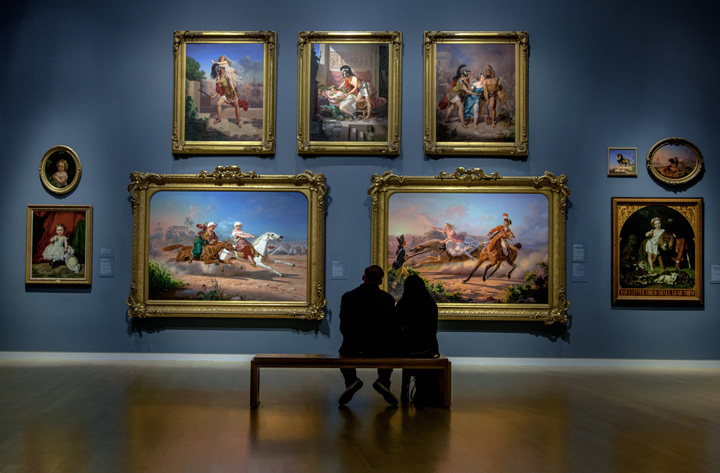“People don’t always realize the fact that the Sun doesn’t stand still and this is a difficulty for a Plein Air Painter!” The Art Place’s featured artist: Madelyn Albee describes what a Plein Air painting venture is like for her. Well-traveled artist Madelyn is no stranger to the challenges and joy of painting outside. She meets twice a week with two different local painting groups. Each group is about 8 to 10 artist from Wolfeboro, Tuftonboro and Brookfield, New Hampshire. They work together to choose and get to a location, but paint individually while they are there. “It’s challenging to interpret a place in two hours, and it’s fun!” she says with a smile.
When Madelyn first arrives at location she thinks about in which medium she would like to create the scene. For her this could be watercolor, oils, pastels as she is fluid in many different medias. “We don’t talk while we are painting, we set up and deal with the elements; it could be windy, mosquito-y, hilly, the shadows are constantly moving…” (that dang moving sun!) Madelyn says that although this planning, prep and set up is complicated, after doing it for so many years it is second nature, and each of the decisions she makes are rather intuitive. An added benefit, Madelyn states, is the fellow artist community that she has enjoyed over the past 10 years. Occasionally the group will travel to a museum or exhibit.

Loons in Moultonborough by Madelyn Albee
Madelyn’s artwork depicts the two landscapes that she knows very well and lives in: painting on location summers in New Hampshire and winters in Lunenburg, Nova Scotia. Her native Lunenburg is often depicted in lone boat scenes set in rugged coves, or brightly colored sails against a misty harbor. Paintings of Wolfeboro often include architectural detailing of New England homes, weathered rowboats set along the shore of Lake Wentworth, or loons collaged within the texture of a local map (shown above). The mood of the day is apparent in the images she creates, Madelyn’s confident brush strokes show a mastery of the elements and media. Her intuitive sensitive response to that experience gives the viewer a chance to be there with her.
Meet the artist Madelyn Albee at The Art Place on Saturday, December 10th during The Wolfeboro Art Walk from 5 to 8 pm.









 I think everyone who attended the show can agree; Jan’s work reflects a strong sense of playfulness, honestly, and gratitude for nature. Jan writes about her passion for gardening, art and life with her inspiring essays that accompany each piece. As an artist and writer, Jan sends off each painting with a gift of a story. This is what makes her work so unique and personal. You can immediately find words to connect to the artwork, even if you are not a regular gallery-goer.
I think everyone who attended the show can agree; Jan’s work reflects a strong sense of playfulness, honestly, and gratitude for nature. Jan writes about her passion for gardening, art and life with her inspiring essays that accompany each piece. As an artist and writer, Jan sends off each painting with a gift of a story. This is what makes her work so unique and personal. You can immediately find words to connect to the artwork, even if you are not a regular gallery-goer.







 Peter Ferber’s August show this year brought the usual crowds and excitement, with people lining up on the street starting at 5:45am. This exhibit features Peter’s classic watercolors as well as rich oils and an acrylic, an ink drawing, and intensely detailed paper cutout with a watercolor accent. Many pieces were sold in the first few minutes, but there are still several gems available for purchase.
Peter Ferber’s August show this year brought the usual crowds and excitement, with people lining up on the street starting at 5:45am. This exhibit features Peter’s classic watercolors as well as rich oils and an acrylic, an ink drawing, and intensely detailed paper cutout with a watercolor accent. Many pieces were sold in the first few minutes, but there are still several gems available for purchase.




